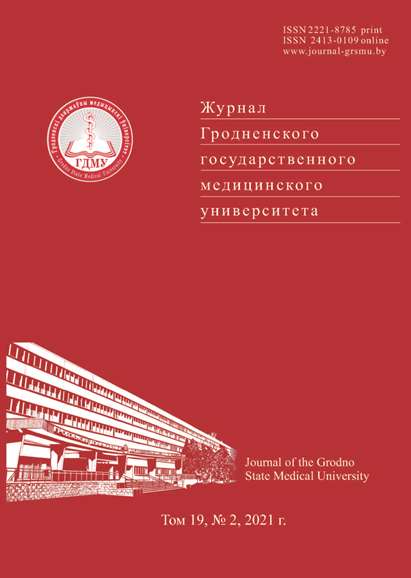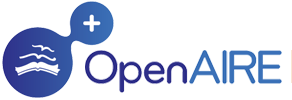ОСОБЕННОСТИ ДИНАМИКИ CD4+CD25+ СУБПОПУЛЯЦИЙ Т-ЛИМФОЦИТОВ ПАЦИЕНТОВ С УДОВЛЕТВОРИТЕЛЬНОЙ РАННЕЙ ФУНКЦИЕЙ ПОЧЕЧНОГО ТРАНСПЛАНТАТА
Аннотация
Введение. Экспериментальные модели указывают на определенную роль T-регуляторных лимфоцитов в индукции иммунологической толерантности. Однако необходимо более детально изучить их функцию и фенотип для возможности применения механизмов индукции толерантности.
Цель. Оценить динамику показателей CD3+CD4+CD25+ и CD3+CD4+CD25+highCD127+low у реципиентов почечного трансплантата с удовлетворительной ранней функцией донорского органа.
Материал и методы. Выполнена трансплантация почки у 197 реципиентов. Оценивали уровни CD3+CD4+CD25+ и CD3+CD4+CD25+highCD127+low на нулевые, первые, третьи, седьмые, 30 и 90 сутки после операции. Выделены группы реципиентов: ПФТ – с удовлетворительной первичной функцией трансплантата, ДФТ – с первичной дисфункцией трансплантата, ОПТ – с отторжением трансплантата в раннем послеоперационном периоде. Группа сравнения (ГС) – здоровые добровольцы.
Результаты. Выявлен значимый рост относительного и абсолютного уровней CD3+CD4+CD25+highCD127+low с 30 по 90 сутки после операции у реципиентов с первично функ-
ционирующим трансплантатом, в то время как показатели CD3+CD4+CD25+ у реципиентов исследуемых групп не имели значимых различий на протяжении всего исследования.
Выводы. Мониторинг CD3+CD4+CD25+highCD127+low может быть использован для выявления пациентов с высоким толерогенным потенциалом.
Литература
Fadel FI, Elghoroury EA, Elshamaa MF, Bazaraa HM, Salah DM, Kassem NMA, Ibrahim MH, El-Saaid GS, Nasr SA, Koura HM. Lymphocyte Activation Markers in Pediatric Kidney Transplant Recipients. Int. J. Biomed. Sci. 2015;11(3):121-130.
Bestard O, Cruzado JM, Mestre M, Caldés A, Bas J, Carrera M, Torras J, Rama I, Moreso F, Serón D, Grinyó JM. Achieving donor-specific hyporesponsiveness is associated with FOXP3+ regulatory T cell recruitment in human renal allograft infiltrates. J. Immunol. 2007;179(7):4901-4909. https://doi.org/10.4049/jimmunol.179.7.4901
Kawai T, Poncelet A, Sachs DH, Mauiyyedi S, Boskovic S, Wee SL, Ko DS, Bartholomew A, Kimikawa M, Hong HZ, Abrahamian G, Colvin RB, Cosimi AB. Long-term outcome and alloantibody production in a non-myeloablative regimen for induction of renal allograft tolerance. Transplantation. 1999;68(11):1767-1775. https://doi.org/10.1097/00007890-199912150-00022
Salcido-Ochoa F, Yusof N, Hue SS-S, Haase D, Kee T, Rotzschke O. Are we ready for the use of foxp3(+) regulatory T cells for immunodiagnosis and immunotherapy in kidney transplantation? J. Transplant. 2012;2012:397952. https://doi.org/10.1155/2012/397952
Ponticelli C. Basiliximab: efficacy and safety evaluation in kidney transplantation. Expert Opin. Drug Saf. 2014;13(3):373-381. https://doi.org/10.1517/14740338.2014.861816
Vondran FWR, Timrott K, Tross J, Kollrich S, Schwarz A, Lehner F, Klempnauer J, Becker T, Schwinzer R. Impact of Basiliximab on regulatory T-cells early after kidney transplantation: down-regulation of CD25 by receptor modulation. Transpl. Int. 2010;23(5):514-523. https://doi.org/10.1111/j.1432-2277.2009.01013.x
Cantaluppi V, Dellepiane S, Tamagnone M, Medica D, Figliolini F, Messina M, Manzione AM, Gai M, Tognarelli G, Ranghino A, Dolla C, Ferrario S, Tetta C, Segoloni GP, Camussi G, Biancone L. Neutrophil Gelatinase Associated Lipocalin Is an Early and Accurate Biomarker of Graft Function and Tissue Regeneration in Kidney Transplantation from Extended Criteria Donors. PLoS One. 2015;10(6):e0129279. https://doi.org/10.1371/journal.pone.0129279
Jiang S, Lechler RI, He X-S, Huang J-F. Regulatory T cells and transplantation tolerance. Hum. Immunol. 2006;67(10):765-776. https://doi.org/10.1016/j.humimm.2006.07.013
Sakaguchi S. Naturally arising Foxp3-expressing CD25+CD4+ regulatory T cells in immunological tolerance to self and non-self. Nat. Immunol. 2005;6(4):345-352. https://doi.org/10.1038/ni1178
Kang SM, Tang Q, Bluestone JA. CD4+CD25+ regulatory T cells in transplantation: progress, challenges and prospects. Am. J. Transplant. 2007;7(6):1457-1463. https://doi.org/10.1111/j.1600-6143.2007.01829.x
Cobbold SP, Waldmann H. Regulatory Cells and Transplantation Tolerance. Cold Spring Harb. Perspect. Med. 2013;3(6):a015545. https://doi.org/10.1101/cshperspect.a015545
Wood KJ, Sakaguchi S. Regulatory T cells in transplantation tolerance. Nat. Rev. Immunol. 2003;3(3):199-210. https://doi.org/10.1038/nri1027
Graca L, Cobbold SP, Waldmann H. Identification of regulatory T cells in tolerated allografts. J. Exp. Med. 2002;195(12):1641-1646. https://doi.org/10.1084/jem.20012097
Fontenot JD, Gavin MA, Rudensky AY. Foxp3 programs the development and function of CD4+CD25+ regulatory T cells. Nat. Immunol. 2003;4(4):330-336. https://doi.org/10.1038/ni904
Seddiki N, Santner-Nanan B, Martinson J, Zaunders J, Sasson S, Landay A, Solomon M, Selby W, Alexander SI, Nanan R, Kelleher A, de St Groth BF. Expression of interleukin (IL)-2 and IL-7 receptors discriminates between human regulatory and activated T cells. J. Exp. Med. 2006;203(7):1693-1700. https://doi.org/10.1084/jem.20060468
Liu W, Putnam AL, Xu-Yu Z, Szot GL, Lee MR, Zhu S, Gottlieb PA, Kapranov P, Gingeras TR, de St Groth BF, Clayberger C, Soper DM, Ziegler SF, Bluestone JA. CD127 expression inversely correlates with FoxP3 and suppressive function of human CD4+ T reg cells. J. Exp. Med. 2006;203(7):1701-1711. https://doi.org/10.1084/jem.20060772































